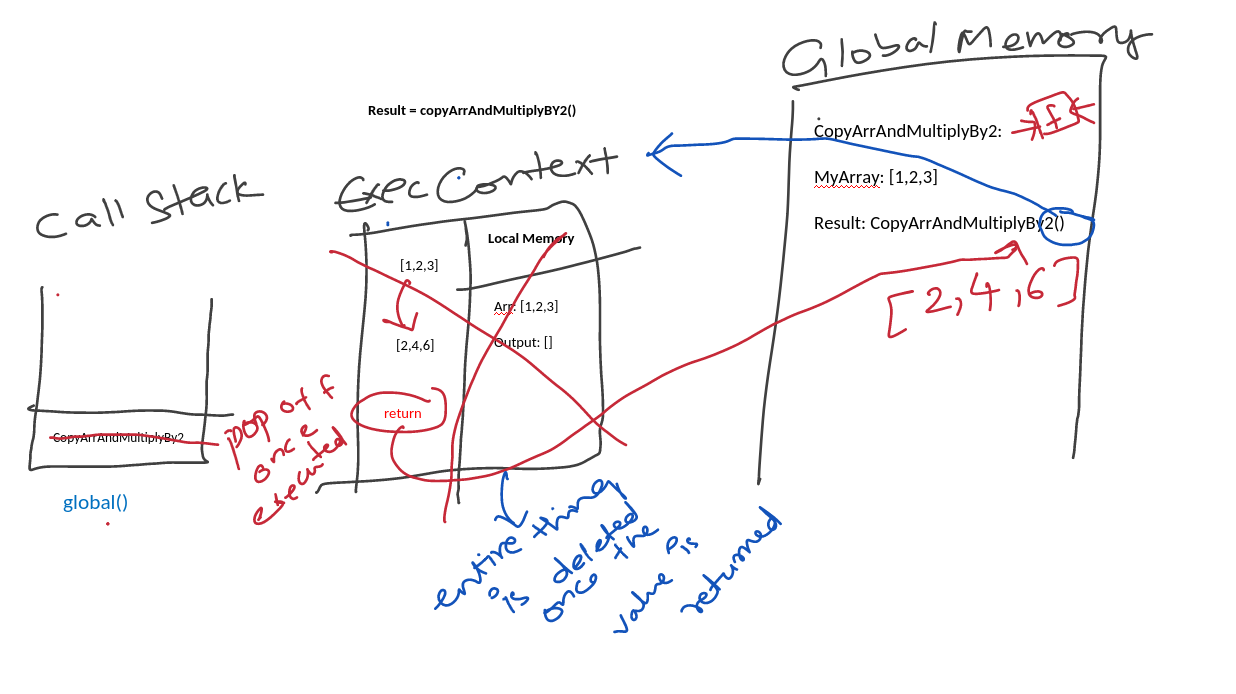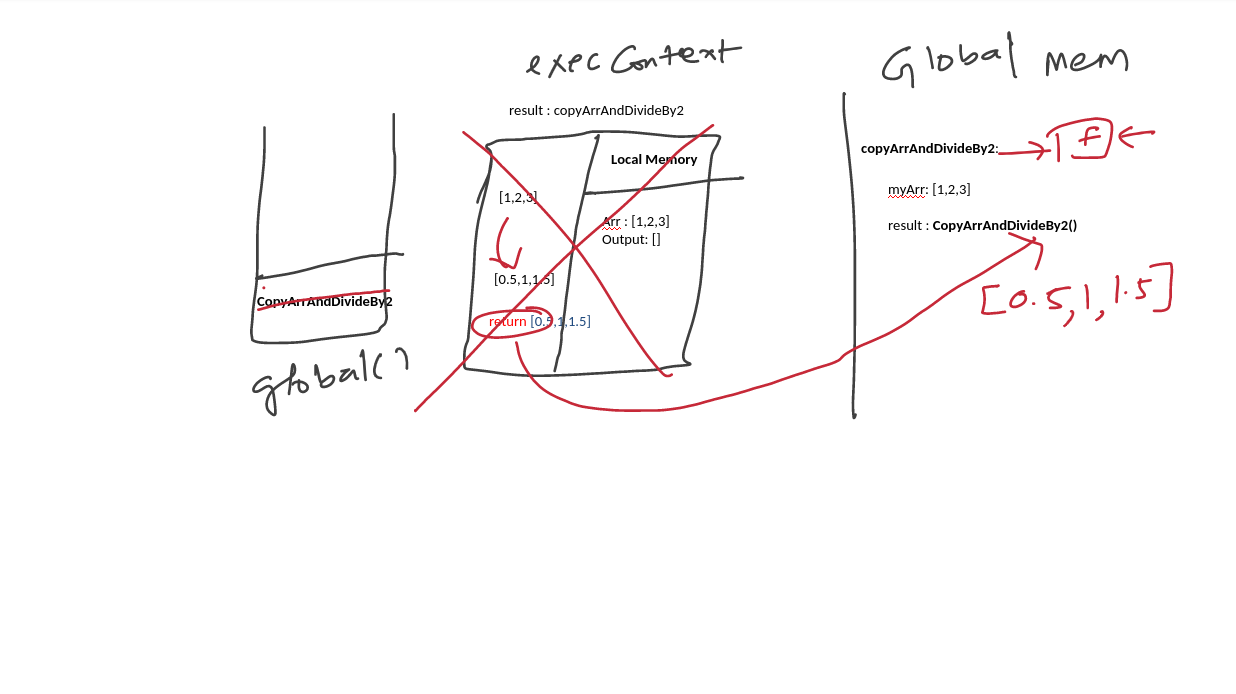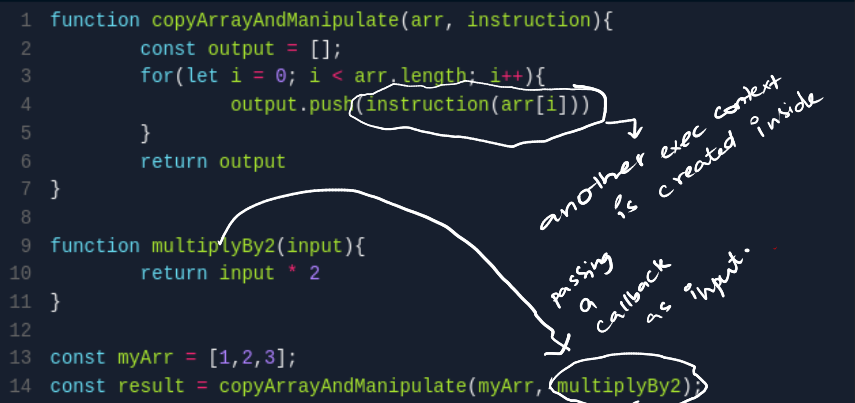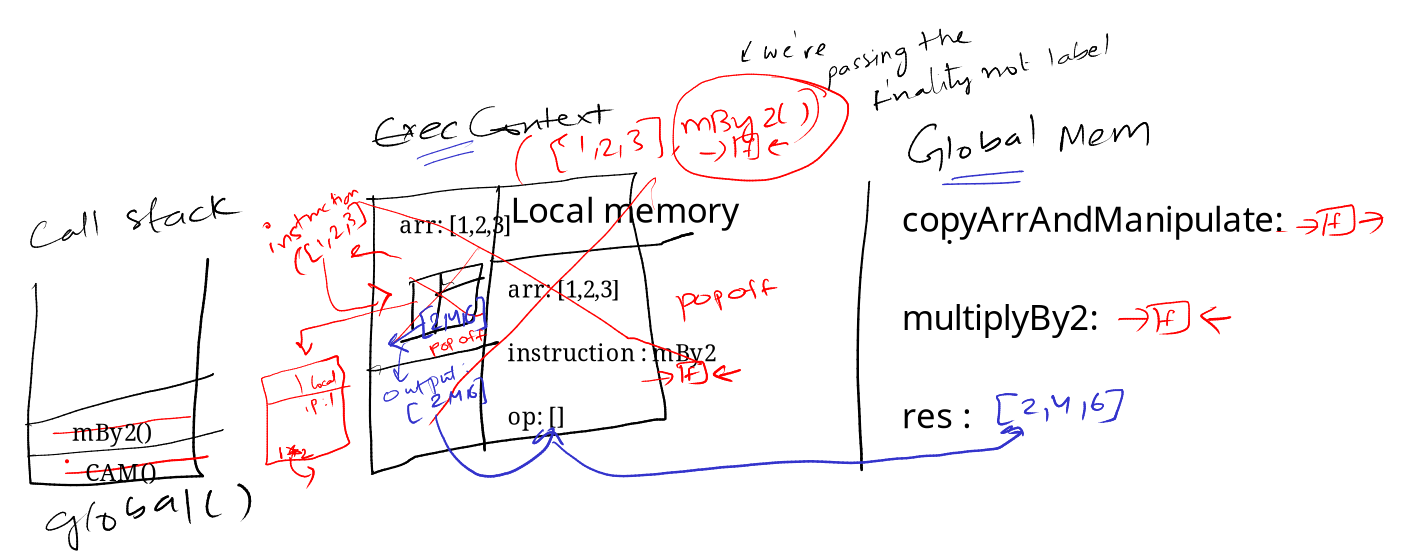Greetings! 👋,
Welcome to the first part of the JS Hard Parts: Demystified series. In this post, we will delve into the concepts of callbacks, execution context, functions, and higher-order functions. So let’s get started without any delay 🚀
Before we proceed, I assume that you already have knowledge of writing loops, functions, and call stack
Functions, callbacks and execution context
Let’s take an example to understand the concepts better. We have a function called copyArrayAndMultiplyBy2 that accepts an array, multiplies each element of the array by 2, and returns the new array.
| |
When this code is interpreted, it executes as follows:

- A function labeled
copyArrayAndMultiplyBy2with a value of function is created in the global memory (interpreter just has a memory of it, didn’t execute it yet). - The array myArr is created in the global memory.
- When result =
copyArrayAndMultiplyBy2(myArr)is executed, an execution context is created as soon as it sees(), the arguments passed in become parameters. The interpreter goes to line 2, andcopyArrayAndMultiplyBy2is simultaneously pushed onto the call stack. - Now we have access to [1,2,3] inside the local memory, next an empty array with label output is created.
- A loop is executed, and a new result [2,4,6] is copied into output.
- Once the value is returned, the value goes back to the global memory, and stores the value of [2,4,6] in the result. As soon as the function is returned, the global execution context is deleted from the memory, and the call from the call stack is popped off.
PS: Remember
global()in node.js orwindowobject in javascript is always the first item on the callstack.
Now, let’s suppose we want to divide each element by 2 in the array. We write a similar function, copyArrayAndDivideBy2 with some modification in the logic:
| |
This is how it is interpreted :

Did you observe something? this function violates the D.R.Y (Don’t Repeat Yourself) principle.
Can we optimise this?
Higher Order Functions (Pass Functionality as a Parameter)
We could generalize our function and pass in our specific instruction(pass in the functionality (a.k.a Callback function)) only when we run copyArrAndManipulate using Higher Order Functions (HOF):
| |
In this case, we pass in a specific instruction (the multiplyBy2 callback function) to the copyArrayAndManipulate function. The copyArrayAndManipulate function takes care of executing the multiplyBy2 instruction on each element of myArr and returns the manipulated array result.

Interpreter executes this as follows:

Does this function copyArrayAndManipulate remind you of anything?. Yes, it’s the polyfill of Arrays.map()
How is this possible?
Functions in JavaScript are first-class citizens, which means that they are treated like any other value, such as a string, number, or object. This means that functions can be passed as arguments to other functions, returned as values from functions (*a.k.a. HOF *), and stored in variables or data structures just like any other value.
This property of functions being first-class citizens is a key aspect of the functional programming paradigm, which emphasizes the use of higher-order functions and treating functions as values that can be manipulated and composed to create more complex functionality.
HOFs and callbacks make the code simpler, readable, and D.R.Y
Examples:
- Declarative readable code -
map(),filter(),reduce() - Asynchronous JS - Callbacks are core aspect of async JS and are underhood of promises, async/await
Until next time, Happy coding! 🎉 💻